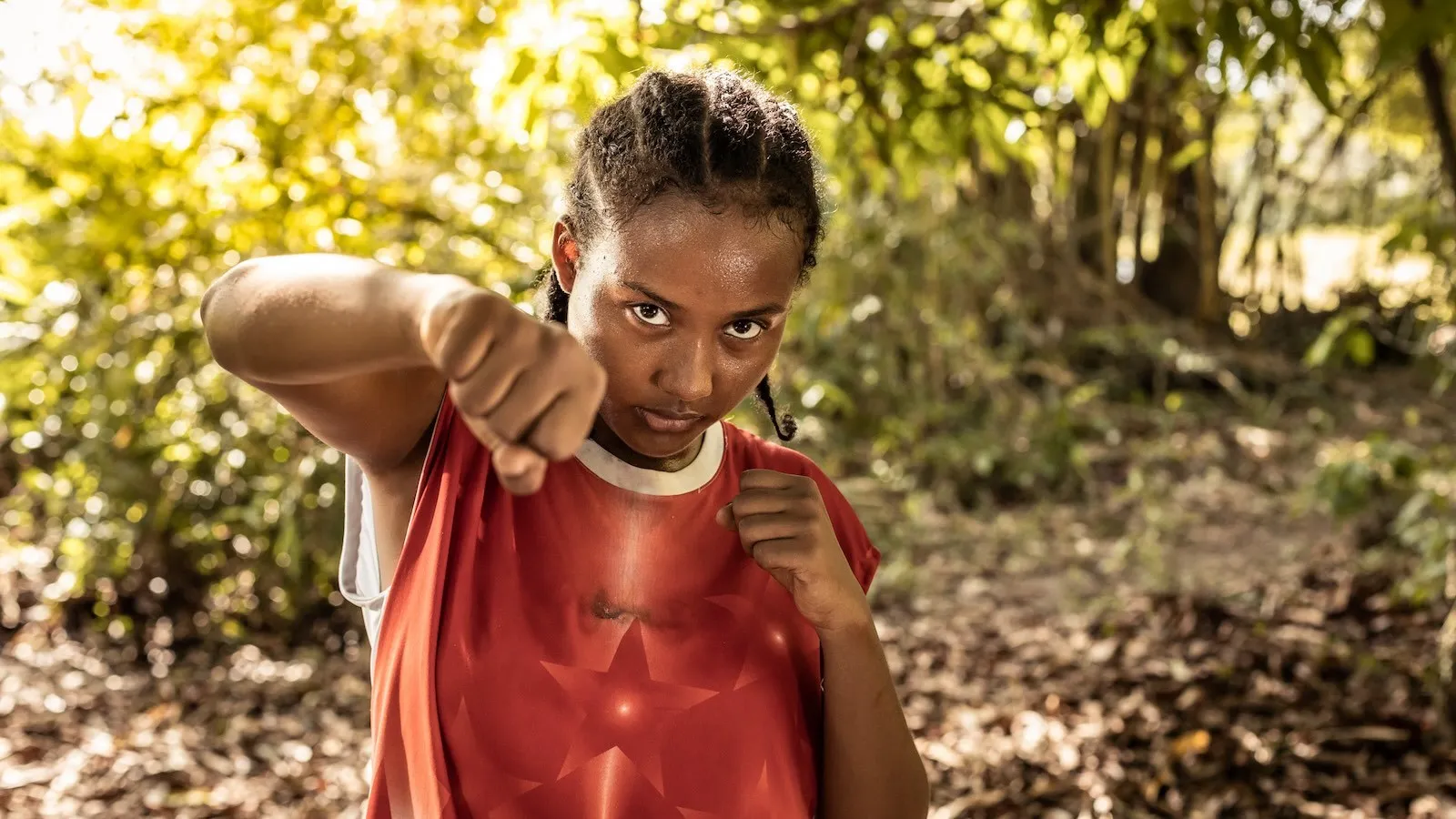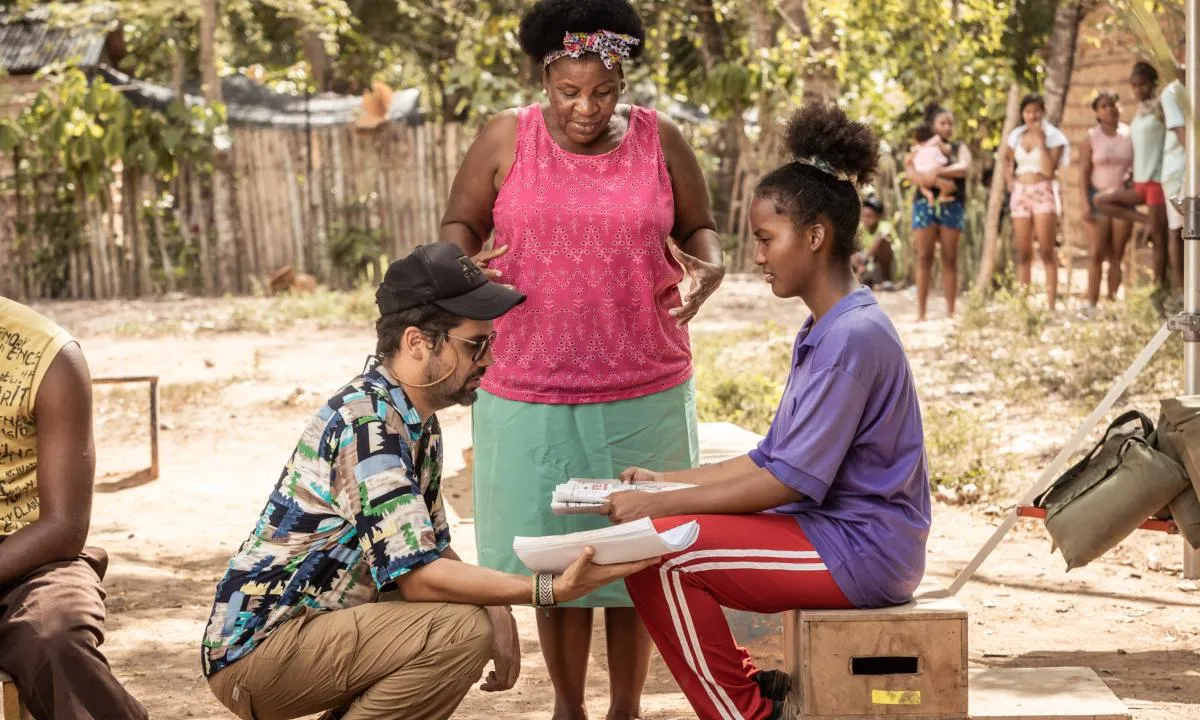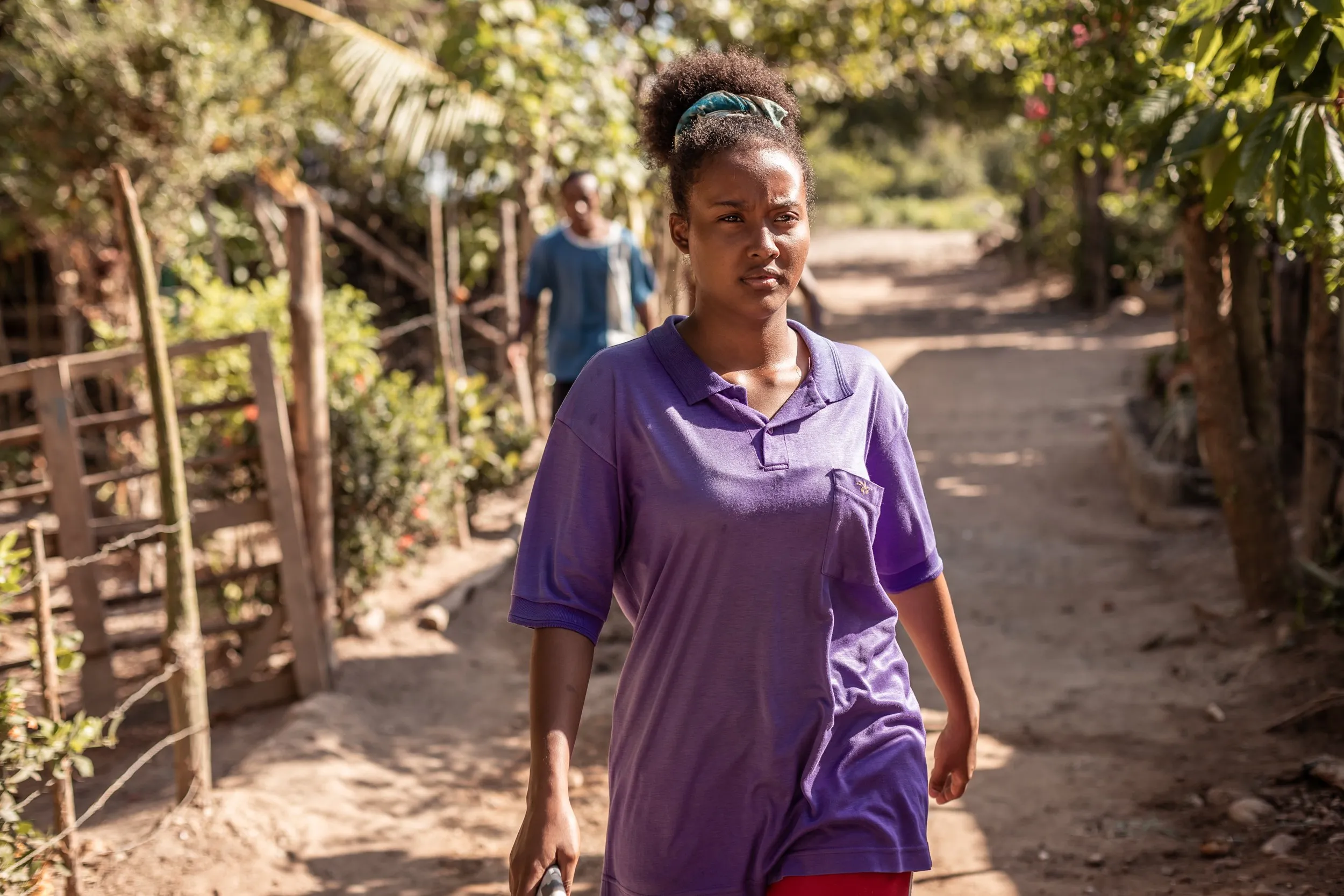The film opens in a remote village tucked away in Colombia, where narrow dirt roads and sprawling, untamed greenery create an unmistakable atmosphere.
The viewer is introduced to a place marked by its rustic charm and an absence of modern comforts such as electricity and television.
This setting, rooted in a specific period and locale, offers a clear picture of daily life in a community that has remained largely untouched by contemporary developments. I find echoes of the raw energy seen in early French New Wave films, where the setting itself plays a significant role in the narrative.
The narrative presents an Afro-Colombian community that faces persistent erasure and neglect from mainstream society.
The characters’ interactions and struggles paint a picture of a people fighting to assert their identity amid long-standing political and economic oversight. The film uses these personal and collective stories to express the challenges that have defined this community’s existence.
At its center is a local boxing match, a pivotal event that becomes a symbol of collective pride. The plot follows the village’s efforts to secure a television to witness the bout, a mission that unites the residents and reflects their determination to claim their place in the world.
Narrative Structure & Storytelling
The film begins by introducing a remote Colombian village and the anticipation surrounding a pivotal boxing match. We see the community preparing as the day of the fight draws near, with the narrative focusing on the efforts made by the villagers to secure a means to view the match.
The timeline follows a clear progression from the build-up of community excitement to the events of the match itself. The plot is organized in a straightforward manner, presenting the key moments that shape the villagers’ experience and the challenges they face along the way.
The boxing match functions as a central event that carries a dual meaning. It stands as a moment of public pride as well as a personal milestone for several characters.
One subplot centers on a young woman determined to redefine her role within the community, as she secretly practices techniques inspired by a family legacy in boxing.
Another narrative thread involves a former trainer whose past with the sport and complicated relationship with the champion adds a layer of personal history and conflict.
The film shifts tone frequently, alternating between light-hearted interactions among the townspeople and more serious personal struggles. These shifts keep the narrative engaging, while each subplot contributes additional depth to the overall story.
The pace is brisk, with the film maintaining a steady flow of events that keep viewers attentive from start to finish. The interplay of individual stories with the collective effort of the community creates a rhythm that is both clear and absorbing.
The editing supports this flow by ensuring that each moment of tension or humor is given sufficient space to resonate. I find the approach reminiscent of certain French New Wave techniques, where spontaneity and clear narrative focus work together to produce a memorable cinematic experience.
Character Development & Performances
Laureana stands out with a clear refusal to accept the roles that tradition would impose. Her ambition to pursue boxing creates a striking contrast with the expectations of her family and community.
Throughout the film, her strong-willed nature comes across in every scene, from quiet moments of self-reflection to spirited exchanges with those who question her choices. Her personal growth is evident as she balances the desire to follow in the footsteps of a legendary family figure with the challenge of redefining what it means to be a young woman in her setting.
Anastasio, once a renowned fighter, casts a long shadow over the narrative. His distant legacy influences the community and serves as a reminder of both past glory and current limitations.
Efrain, with his complicated history in the sport, offers a nuanced perspective on the sacrifices and disappointments that come with a life in boxing.
His conflicts provide a window into the generational differences and the weight of personal regret. Pabla, the matriarch, embodies the traditional views that clash with Laureana’s modern aspirations.
Their exchanges are charged with emotion, highlighting the tension between preserving long-held customs and embracing change.
Minor characters contribute significantly by reflecting the collective spirit of the town. Scenes of everyday interactions, such as communal games and shared responsibilities, enrich the narrative and deepen our understanding of the community’s bond.
The actors deliver performances that feel genuine and spontaneous, with dialogue that captures the rhythm of daily life. This authenticity in performance helps ground the film, allowing viewers to experience the communal effort and shared dreams that drive the story forward.
Cinematography & Visual Storytelling
The film presents the Caribbean setting as an active participant in the narrative. The camera captures expansive views of the lush terrain, where natural light spills over rustic buildings and untamed vegetation.
Every frame emphasizes the raw beauty of the environment, using soft sunlight and deep shadows to draw attention to the village’s distinctive character. Wide shots of the surrounding hills and intimate close-ups of weathered textures combine to create a layered visual experience.
Recurring images appear throughout the film, such as the interplay between dark, secluded corners and sunlit open spaces. This visual play serves as a reminder of hope amid hardship.
Daily moments—like the sight of local women singing as they work and neighbors engaging in communal tasks—carry subtle symbolic weight. These sequences offer emotional depth, allowing the viewer to feel the pulse of a community that finds strength in unity.
The director employs deliberate camera movements and precise framing that capture the village’s spirit with clarity. Thoughtful editing balances expansive outdoor vistas with focused, human-scale details, giving each scene its own distinct tone.
The approach to visual storytelling recalls techniques found in classic French New Wave films, where setting and mood work together to support the narrative. This method provides a rich, textured experience that turns everyday visuals into a powerful narrative tool.
Music, Sound & Atmosphere
The film builds its environment with an attentive soundscape that roots each scene in a sense of place. Ambient noises—from the rustling of palm fronds to distant conversations—capture the local rhythm.
Traditional songs, such as the heartfelt tunes sung by the grandmother, bring a deep connection to local heritage, offering insight into the community’s spirit.
Sound cues mark shifts in mood as the narrative unfolds. Moments of quiet tension are matched with subtle musical accents, while the energy of the boxing match finds a counterpart in a stirring score that highlights both challenge and achievement.
The deliberate choice of instruments and sound effects serves as a narrative guide, underscoring personal triumphs and community solidarity.
The audio elements work in sync with the visuals to shape the film’s pace and feel. The interplay between natural sounds and crafted musical pieces creates a layered atmosphere that draws the viewer into the experience.
This attentive approach to sound mirrors the techniques seen in films I admire, recalling the raw and authentic audio styles of some French New Wave works. The result is a film that invites its audience to experience each scene as an immersive reflection of local life and collective resilience.
Themes & Cultural Significance
The film examines the disappearance of a community from records and memory. It presents the struggles of an Afro-Colombian group whose presence fades from maps and history.
Through Laureana’s aspirations and inner conflicts, the film contrasts a personal sense of self with the shared identity of the community. Her inner battle mirrors the tension between an individual’s dreams and the collective experience of a people often left aside by official narratives.
In its portrayal of rural life, the film brings attention to the lack of investment and support in isolated areas. The narrative highlights a clear divide where government actions have left certain communities isolated and struggling to secure basic resources.
This depiction calls attention to a long-standing issue in society, where economic challenges and policy decisions have left an indelible mark on those living far from urban centers.
A notable aspect of the film is its focus on a joint effort to embrace modern conveniences, such as the installation of electricity and a television for communal benefit.
The boxing match in the story stands as a symbol for the chance to claim dignity and recognition. The depiction of this shared mission brings forward a feeling of unity that is both touching and authentic.
The film also examines the constraints imposed by traditional roles, as seen in the friction between expected behavior and individual desires.
Laureana’s determination to pursue her interests serves as a striking example of resisting societal limitations. Her actions encourage her community to question conventional norms.
The cultural impact of this work lies in its portrayal of resilience and hope. By addressing themes of identity, neglect, and collective effort, the film offers a reflective look at underrepresented communities.
This exploration serves as a reminder of the importance of giving voice to those whose stories remain untold, a subject that holds a personal significance for me given my own passion for films that challenge the ordinary.
The Review
La Suprema
In a film that offers a heartfelt glimpse into a community reclaiming its identity, each element works to build an engaging portrait of resilience. The narrative effectively balances personal ambition with collective struggle, drawing viewers into the lives of characters who challenge outdated roles. Its careful integration of visual and sound design creates a memorable experience that resonates on both an emotional and cultural level. Overall, a thoughtful work that marks a notable entry in contemporary cinema.
PROS
- Authentic portrayal of a close-knit community
- Rich character development and relatable conflicts
- Striking cinematography and immersive sound design
CONS
- Occasional tonal inconsistencies
- Some subplots may feel underdeveloped




















































